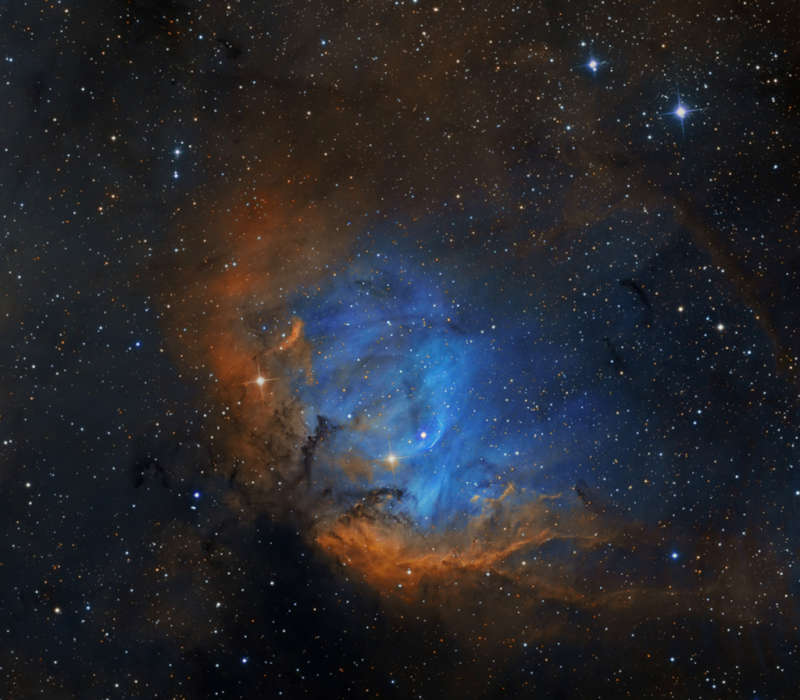
|
Credit & Copyright: Martin Pugh
Explanation:
Framing a bright emission region
this telescopic view
looks out along the plane of our Milky Way Galaxy toward the
nebula rich constellation
Cygnus
the Swan.
Popularly called the Tulip Nebula, the glowing cloud of
interstellar gas and dust is also found in the
1959 catalog
by astronomer Stewart Sharpless
as
Sh2-101.
About 8,000 light-years distant and 70 light-years across
the complex and beautiful nebula blossoms at the center of the
composite image.
Red, green, and blue hues
map emission
from ionized sulfur, hydrogen, and oxygen atoms.
Ultraviolet radiation from young, energetic stars
at the edge of the Cygnus
OB3 association, including
O star HDE 227018,
ionizes the atoms
and powers the visible light emission from the Tulip Nebula.
HDE 227018 is the bright star very near the blue arc
at the center of the cosmic tulip.
|
January February March April May June July August September October November December |
| |||||||||||||||||||||||||||||||||||||||||||||||||||||||
NASA Web Site Statements, Warnings, and Disclaimers
NASA Official: Jay Norris. Specific rights apply.
A service of: LHEA at NASA / GSFC
& Michigan Tech. U.
Based on Astronomy Picture
Of the Day
Publications with keywords: emission nebula
Publications with words: emission nebula
See also:
- APOD: 2025 December 17 Á W5: The Soul Nebula
- APOD: 2025 December 9 Á The Heart of the Soul Nebula
- APOD: 2025 September 19 Á The NGC 6914 Complex
- APOD: 2025 September 10 Á The Great Lacerta Nebula
- APOD: 2025 July 21 Á Cats Paw Nebula from Webb Space Telescope
- APOD: 2025 July 16 Á The Rosette Nebula from DECam
- APOD: 2025 July 5 Á Ou4: The Giant Squid Nebula
